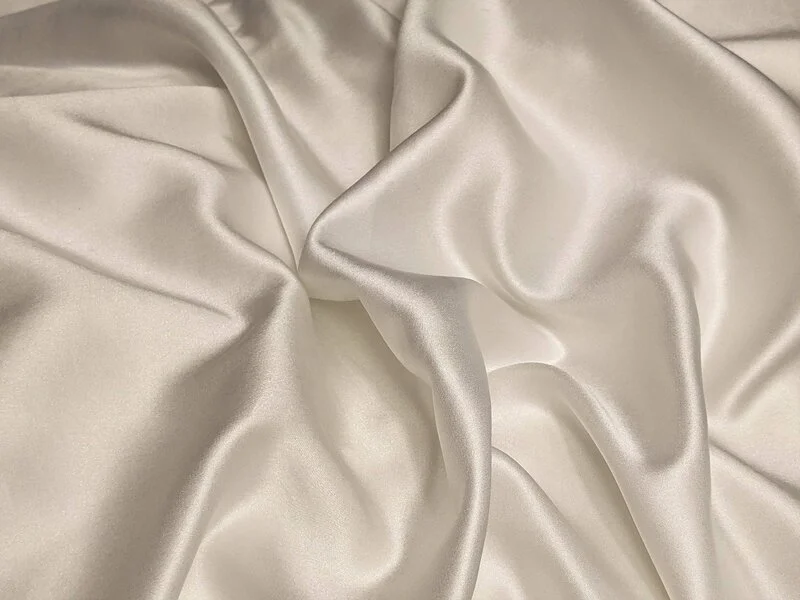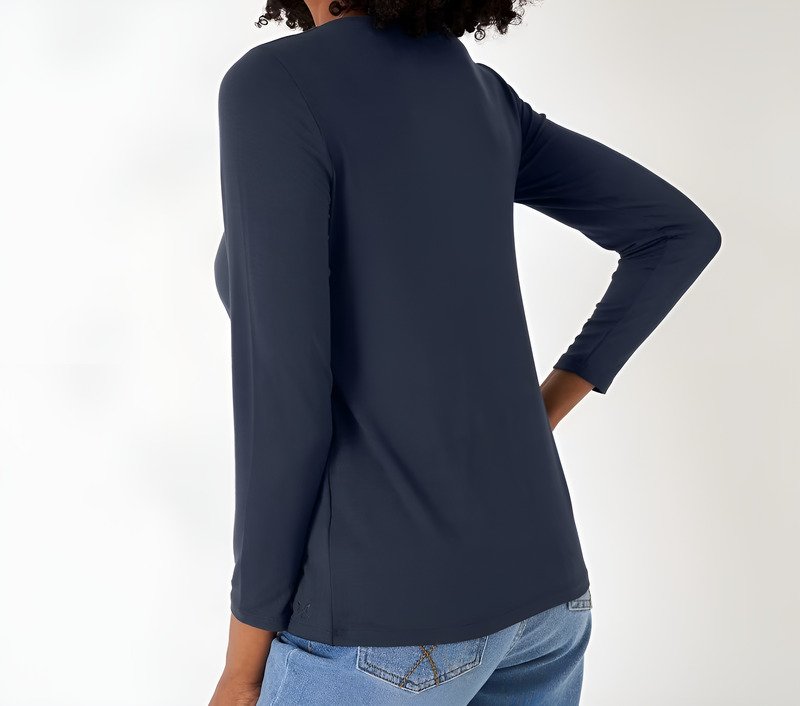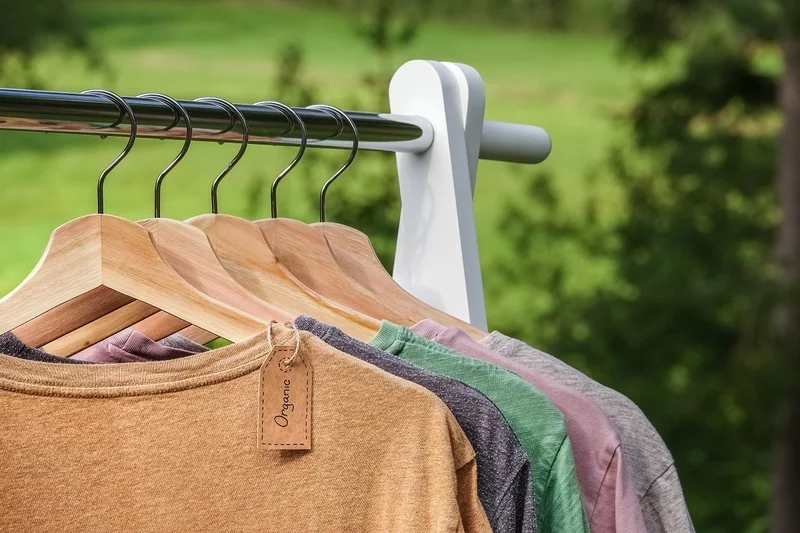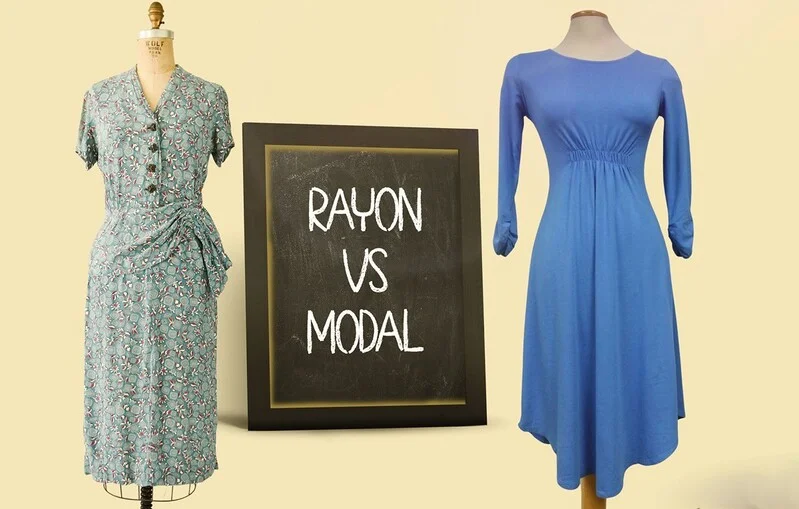What Is A Modal? Definition, Examples And Best Practices
Curious about “what is modal” and why this fabric is gaining popularity? This guide offers a comprehensive look at Modal, a semi-synthetic textile renowned for its exceptional softness, derived from beech tree pulp.
Discover its manufacturing process and standout features like excellent breathability, moisture absorption, vibrant color retention, and wrinkle resistance. We’ll compare Modal to other common fabrics, explore its versatile applications, and provide essential care instructions to keep your Modal items looking and feeling their best.
1. What exactly is modal?
Modal is a type of fabric famous for being incredibly soft and comfortable to wear. Many people love it for clothes and items that touch their skin.
It’s called a “semi-synthetic” fabric (meaning it comes from nature but needs a chemical process to become fiber). Modal starts its life as wood pulp from beech trees. It’s actually a type of rayon (a family of fabrics made from plant cellulose), but it’s often seen as a newer, improved version compared to basic rayon.
Because it feels so gentle and smooth, Modal fabric is very popular for things like pajamas, underwear, t-shirts, bed sheets, and loungewear. Its softness makes everyday items feel a bit more luxurious.

2. Where does modal come from?
Modal fabric begins its journey with beech trees. These trees are a natural resource, and they are often grown in sustainable forests (forests managed in a way that doesn’t harm the environment long-term). Beech trees are useful because they grow well in many places and sometimes need less land and water compared to crops like cotton.
Making Modal involves several steps, using the wood from these trees:
- Wood from beech trees is harvested and broken down into small chips.
- A natural part inside the wood, called cellulose (think of it as the main building block of the plant) is taken out using special liquids.
- This cellulose mixture is pushed through tiny holes, like a shower head, to form long, thin threads called fibers (cellulosic fibers).
- These fibers are treated, washed, and then spun together to create yarn.
- Finally, this yarn is woven or knitted into the soft Modal fabric we use for clothing and other items.
Because it starts with wood but uses chemicals in the process, it’s called semi-synthetic.
It’s good to know that some companies work hard to make Modal in a more environmentally friendly way. For example, Lenzing AG, a company from Austria, is famous for its high-quality TENCEL™ Modal. They use special eco-friendly manufacturing processes that recycle water and the liquids used, reducing waste and pollution. This makes their Modal a more sustainable choice.
3. What makes modal special?
Modal has several great features that make it a favorite for many people. Let’s look at why it’s so popular.
3.1. Super soft feel
The first thing most people notice about Modal is its softness. It feels incredibly soft and silky smooth against the skin. Many describe it as feeling much softer than regular cotton. This exceptional softness and smooth feel makes it perfect for clothing that sits close to your body, like underwear, pajamas, and basic tees. It just feels gentle and luxurious.
3..2. Breathable and cool
Modal is very breathable. This means air can pass through the fabric easily, helping heat escape from your body and keeping you feeling cooler. It also has high moisture absorption and breathability; it can absorb sweat away from your skin and allows it to evaporate quickly. This makes Modal a great choice for warm weather clothing, activewear, or comfortable sleepwear. If modal fabric is modal fabric good for summer, the answer is usually yes!

3.3. Beautiful drape
Drapability refers to how a fabric hangs or falls. Modal has a beautiful, fluid drape. It flows nicely and doesn’t look stiff or clingy. This quality makes clothes like dresses, skirts, flowy tops, and scarves look elegant and feel light and comfortable to wear.
3.4. Holds color well
Modal fabric takes dye very well. Colors often look very vibrant and deep on Modal. Plus, these colors tend to last well, resisting fading through washing better than some other fabrics.
3.5. Resists shrinking & pilling
Modal generally has good resistance to shrinking and pilling compared to cotton or standard rayon. It usually keeps its shape well after washing. It’s also less likely to form ‘pills’ (those small fuzz balls) than many other soft fabrics. However, it’s not completely immune – a lot of rubbing or friction over time can still cause some minor pilling. So, while it resists shrinking well, following care instructions is still wise.
3.6. Eco-friendlier aspects
Modal can be a more environmentally friendly choice for several reasons:
- Renewable source: It comes from beech trees, which can be regrown. Because it’s made from plant material (cellulosic fibers), Modal is biodegradable, meaning it can break down naturally over time after being discarded.
- Resource use: Growing beech trees typically uses less farmland and significantly less water than growing conventional cotton. Often, the wood comes from sustainable forests.
- Cleaner production: As mentioned, producers like Lenzing use eco-friendly manufacturing processes for their TENCEL™ Modal, focusing on recycling water and chemicals. It’s important to note that not all Modal is made this way, but choosing brands known for sustainability helps. If you want to find out if Modal is sustainable or eco-friendly, looking for brands like TENCEL™ is a good start.

4. Are there any downsides to modal?
Like any material, Modal isn’t perfect. Here are a few things to keep in mind:
- Pilling potential: While it resists pilling better than many fabrics, it can still develop some fuzz balls over time, especially in areas that get a lot of friction (like underarms or where a bag rubs).
- Cost: Modal fabric and clothing made from it often cost a bit more than items made from basic cotton or standard rayon.
- Care needs: It often benefits from gentler care than very sturdy fabrics. Washing in cold water and drying on low heat or air drying is usually recommended (more on this below).
- Warmth: Because it’s breathable and cool, Modal isn’t the best choice if you need a very warm fabric for cold weather, like wool or heavy fleece.
- Strength: While modern Modal is durable enough for everyday wear, it might not be as rugged as heavy-duty cotton, especially when wet.
5. Modal vs. other fabrics: quick comparisons
Let’s see how Modal compares to some other common fabrics to help you understand its unique qualities.
| Feature | Modal | Cotton | Rayon (Viscose) | Lyocell (TENCEL™) |
|---|---|---|---|---|
| Softness | Very soft | Soft | Soft | Very soft |
| Breathability | Very good | Good | Good | Very good |
| Shrinkage | Low | Medium | Medium-high | Low |
| Eco (typical) | Better | Varies | Lower | Best |
| Cost | Higher | Lower | Lowest | Highest |
5.1. Modal vs. cotton
Here’s a quick modal vs cotton fabric comparison:
- Softness: Modal usually feels significantly softer and silkier than regular cotton.
- Breathability: Both are breathable, but Modal often feels cooler because it wicks moisture better.
- Shrinkage: Modal generally shrinks less than cotton.
- Eco-impact: This depends. High-quality Modal (like TENCEL™) often uses less water and land than conventional cotton. Organic cotton is much better environmentally than conventional cotton.
- Durability: Cotton is known for being strong. Modal is durable too, but perhaps not quite as tough as rugged cotton canvas.
- Cost: Modal is typically more expensive than basic cotton.
5.2. Modal vs. rayon (viscose)
Modal is a high-strength type of rayon, often considered a second-generation, improved version of standard rayon (also known as viscose). The main improvements are that Modal is stronger than standard rayon fabrics, especially when wet (High Wet Modulus (HWM) rayon means stronger when wet), feels softer, and is less prone to pilling.

5.3. Modal vs. lyocell (TENCEL™)
Modal and Lyocell are quite similar. Both are soft cellulosic fibers made from wood pulp, often from responsibly managed sources. Both are made by Lenzing AG under the TENCEL™ brand (TENCEL™ Modal and TENCEL™ Lyocell), known for eco-friendlier production.
The main difference is the production process: Lyocell (TENCEL™) uses a unique ‘closed-loop’ system that recycles almost all water and solvents, making it highly regarded for sustainability. Feel-wise, they are both extremely soft, though some find Lyocell slightly cooler or even smoother. Both are considered premium, comfortable fibers.
6. What is modal fabric used for?
Because Modal is so soft, breathable, drapes beautifully, and holds color well, it’s used in a wide variety of clothing and home goods. Common uses include:
- Items close to the skin: Underwear, bras, pajamas, robes, loungewear, t-shirts, tank tops.
- Everyday & active wear: Casual dresses, skirts, blouses, scarves, some types of activewear or base layers due to breathability and softness.
- Home textiles: Bed sheets, pillowcases, sometimes blended into towels for extra softness and absorbency.
- Blends: Modal is often blended with other fibers to combine benefits. A common example is Modal-Spandex (or elastane) blends, which add stretchiness for items like leggings, fitted tops, and comfortable underwear.
These textile properties and uses make Modal very versatile. Apparel (underwear, pajamas, shirts) is perhaps its most frequent application.
7. How to care for your modal items
Taking good care of your Modal items will help them stay soft and last longer. Here are some simple fabric care instructions:
- Check the label first: Always read the care tag on your specific garment before washing.
- Wash cold: Wash Modal items in cold water on a gentle cycle in your machine. Cold water helps prevent potential shrinking and fading, and it saves energy.
- Use mild detergent: Choose a gentle laundry detergent. Avoid harsh chemicals.
- No bleach: Do not use chlorine bleach on Modal, as it can weaken and damage the fibers.
- Dry gently: It’s best to tumble dry on a low heat setting. Even better is to hang the item to air dry or lay it flat. Air drying is the gentlest method and further prevents heat damage or shrinking.
- Iron low: If you need to iron, use a cool or low heat setting. Ironing inside-out or placing a thin cloth between the iron and the fabric can provide extra protection. High heat can damage Modal fibers.
8. Frequently asked questions (FAQs) about modal
Here are quick answers to some common questions about Modal:
8.1 Is modal stretchy?
Pure 100% Modal isn’t very stretchy on its own, though its drape can feel flexible. For added stretch, it’s very often blended with spandex (elastane). Look for Modal-Spandex blends on the label if you need stretch.
8.2 Is modal natural or synthetic?
It’s semi-synthetic. It originates from a natural source (beech trees) but requires a chemical manufacturing process to turn the wood pulp into usable fibers.
8.3 Is modal good for sensitive skin?
Generally, yes. Its exceptional softness and breathability make it very comfortable against the skin and less likely to cause irritation compared to rougher or less breathable fabrics.
8.4 Is modal the same as TENCEL™?
TENCEL™ is a brand name owned by the company Lenzing AG. They produce high-quality, often sustainable versions of both Modal (called TENCEL™ Modal) and Lyocell (called TENCEL™ Lyocell). So, you can buy Modal that is TENCEL™ Modal, but not all Modal fabric is from the TENCEL™ brand.
8.5 Does modal wrinkle easily?
Modal resists wrinkles quite well, better than fabrics like linen or 100% cotton. It might show some wrinkles after washing or packing, but they often fall out easily, especially if the garment is hung up.
Explore more:
Modal fabric offers a fantastic combination of benefits. Its main appeal lies in its incredible softness and luxurious feel, making it extremely comfortable to wear. Added to that are its excellent breathability, beautiful drape, good color retention, and resistance to shrinking.
Environmentally, Modal also has several advantages. It’s made from renewable beech trees, is biodegradable, and versions like TENCEL™ Modal are produced using sustainable practices that minimize environmental impact.
Overall, Modal is an excellent choice for clothing and home items where comfort, softness against the skin, and breathability are priorities. Think underwear, pajamas, t-shirts, loungewear, dresses, and soft bed sheets. If you value amazing softness, everyday comfort, and a fabric that feels gentle while often being a more sustainable option, Modal is definitely worth trying.






















